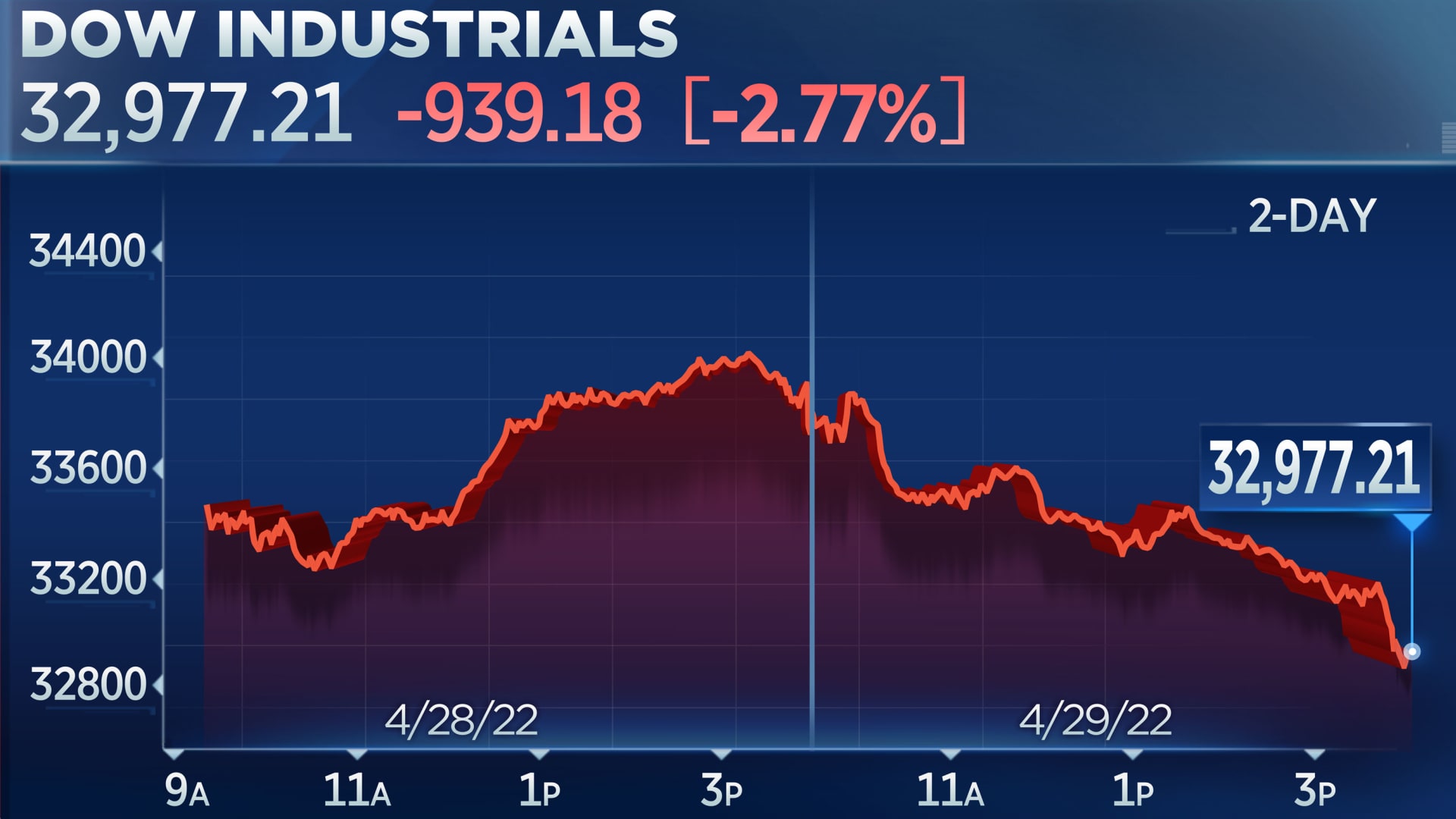Dow tumbles 900 points and Nasdaq drops 4% to close out a brutal month

U.S. stocks sunk Friday with the Nasdaq Composite notching its worst month since 2008, as Amazon became the most recent victim in April’s engineering-led offer-off.
The tech-large Nasdaq Composite fell virtually 4.2% to 12,334.64, weighed down by Amazon’s post-earnings plunge. The S&P 500 retreated by 3.6% to 4,131.93. The Dow Jones Industrial Common lose 939.18 points, or close to 2.8%, to 32,977.21.
The Nasdaq finished at a new very low for 2022 and the S&P 500 did as properly, with the principal inventory benchmark using out its past low in March.
Stocks shut out a dismal thirty day period as buyers contended with a slew of headwinds, from the Federal Reserve’s monetary tightening, soaring prices, persistent inflation, Covid scenario spikes in China and the ongoing war in Ukraine.
“The markets are hoping to wrap all over a good deal of diverse cross-currents,” BMO Prosperity Management’s Yung-Yu Ma reported. “With the Fed increasing charges and all the uncertainties that the world economy is going through, it is tough to get enthusiastic about paying out the multiples that now prevail in a lot of areas in the market place.”
The Nasdaq fell about 13.3% in April, its worst monthly functionality because Oct 2008 in the throngs of the money crisis. The S&P 500 misplaced 8.8%, its worst thirty day period given that March 2020 at the onset of the Covid pandemic. The Dow was down 4.9% on the thirty day period.
Technological innovation stocks have been the epicenter of the April sell-off as higher interest prices harm valuations, and offer chain difficulties stemming from Covid and the war in Ukraine disrupt business.
Amazon on Friday sunk about 14% — its greatest drop since 2006 — soon after the e-commerce large reported a shock loss and issued weak revenue steerage for the 2nd quarter.
“The present-day market performance is threatening to make a changeover from a longish and unpleasant ‘correction’ to a little something a lot more troubling,” Marketfield Asset Management Chairman Michael Shaoul wrote.
“March 2020 for instance saw really sharp declines, but equally quick recoveries. The current episode appears a lot more very likely to impose prolonged long lasting losses in buyers that piled in all through the 2021 rally, and is greatest assumed of a ‘creeping bear market place,’ that is steadily widening its internet over prior industry leadership,” Shaoul additional.
The Nasdaq Composite sits in bear marketplace territory, 23.9% down below its intraday substantial. The S&P 500 is off its record by 14.3%, and the Dow is 10.8% decreased.
Friday wrapped up one of the busiest months for the 1st-quarter earnings period and a especially powerful a single for tech companies, which drove trader sentiment all through the week.
Apple shares fell about 3.7% after administration stated provide chain constraints could hinder fiscal 3rd-quarter revenue.
Intel fell 6.9% following the company issued weak direction for its fiscal second quarter.
About 80% of S&P 500 companies have conquer quarterly earnings expectations, with approximately fifty percent of the index’s users having reported success so far, in accordance to FactSet.
“Inspite of what we view as a good overall earnings time period so much, the constructive results look to be getting overshadowed by some of the broader considerations related to inflation and the Fed,” BMO’s Brian Belski stated in a note to clients.
A incredibly hot inflation looking at Friday underscored the difficult setting. The main individual intake expenditures value index — the Fed’s desired inflation gauge — rose 5.2% from a calendar year in the past.
Next 7 days, investors are awaiting the Fed’s coverage assembly, the April work report and a flurry of company earnings from the likes of Pfizer, Starbucks, Uber and much more.
The S&P 500 is now down 13.3% in 2022. The Nasdaq is off by about 21.2%, and the Dow is just about 9.3% decreased on the year.







